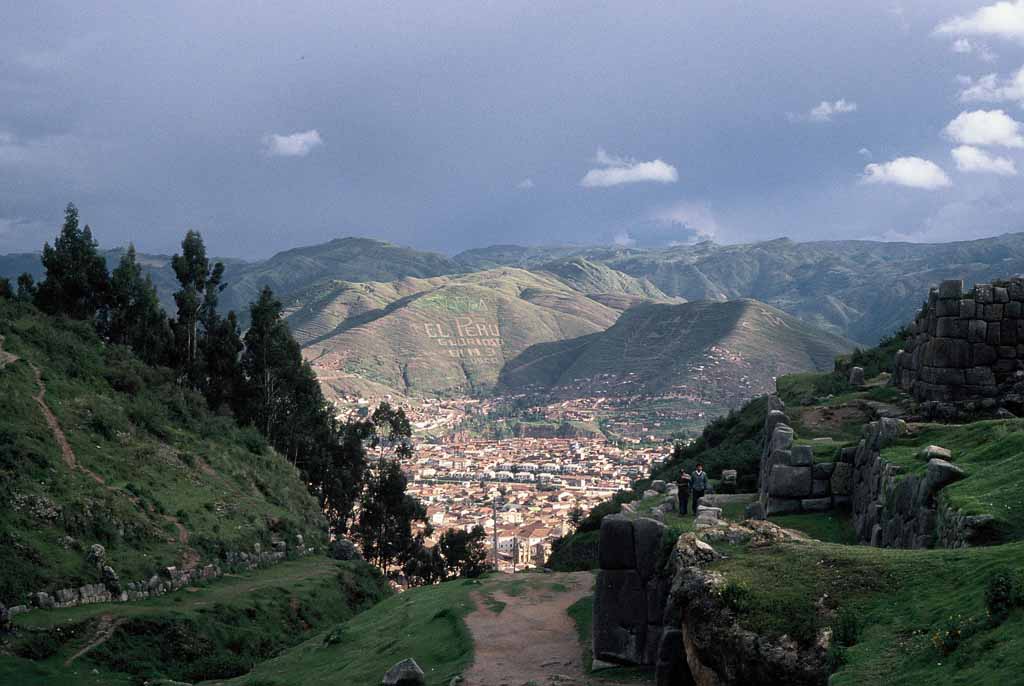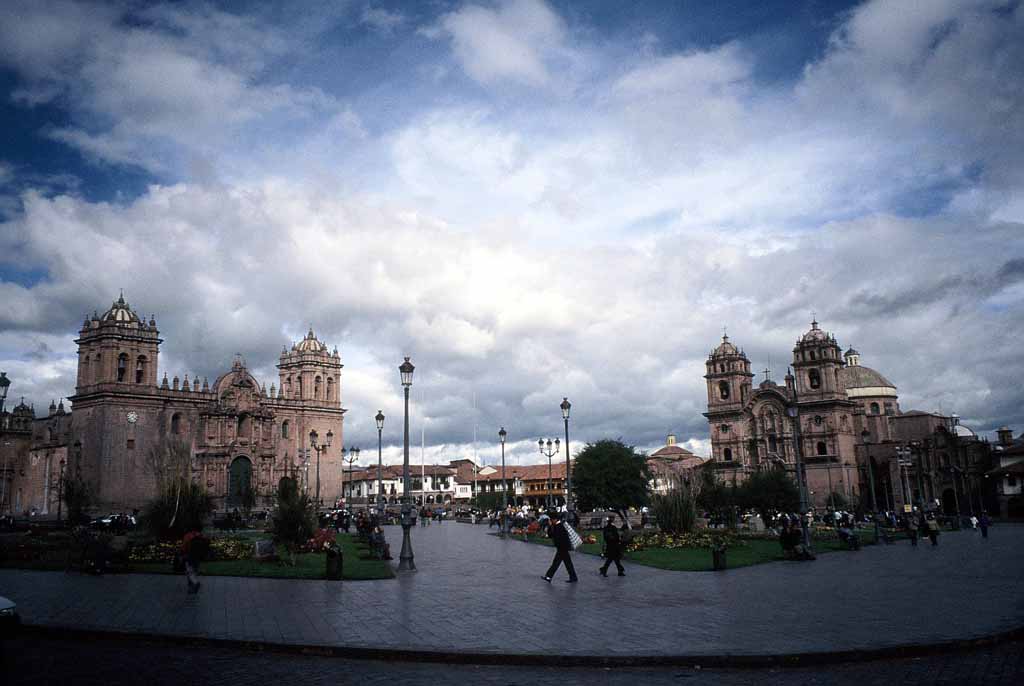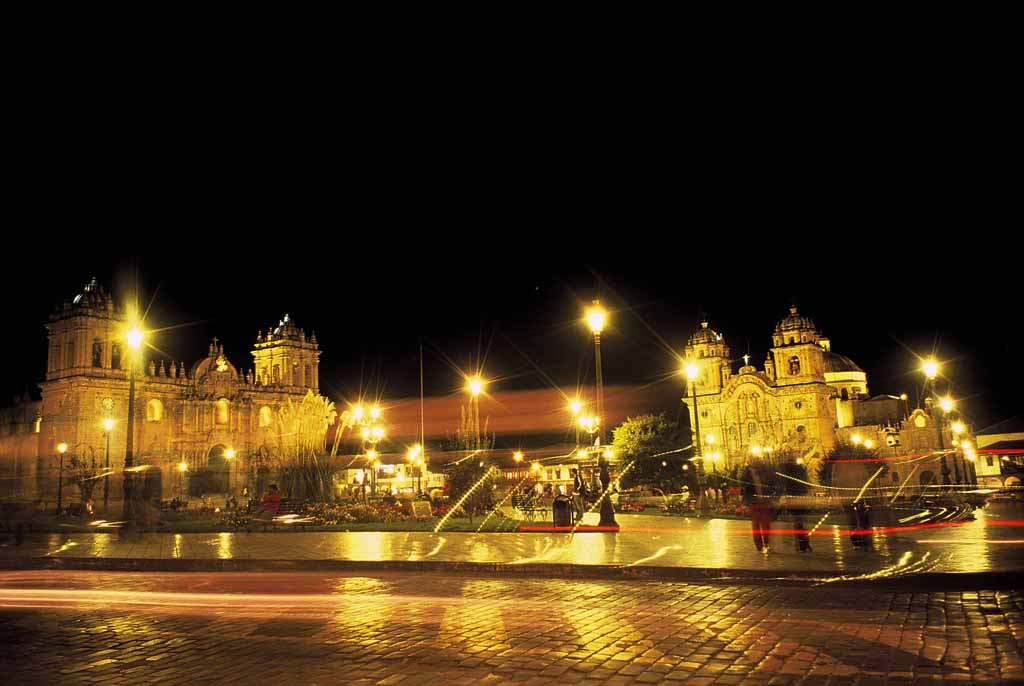Travelogue Peru 2006
Via Puno to Cusco
Sunday we spent on the bus to Puno at Lake Titicaca (at some 3,800 meters the highest navigable lake of the world), unfortunately there are no overnight buses so we lost a day. After we arrived in the afternoon there was little time and we just went to a viewpoint to take some pictures of the lake and the town. From inside the town does not look as idyllic as from the surrounding mountains. Puno isn’t very attractive but nevertheless touristy as it is the basis for visiting the Peruvian side of Lake Titicaca and also the portal for tourists coming from or going to Bolivia.
Because I already had been to Puno in 2003 the main reason for coming here was the railway from Puno to Cusco. This trip had been recommended to me several times and I had hoped for an old train, with many indigenous people aboard, maybe even different animals, a train going up steep and high mountains, going through narrow canyons and over scary bridges crossing deep gorges. Well, the trip did not meet my keen expectations. Local people do not use the train anymore as the busses are much faster. Hence the trains are not old but in very good condition to meet the touristy purpose, the seats are comfortable, everybody has a table and exquisite meals are available. First class is even better but much more expensive.

The train does not go up and down and over scary bridges. We first went along the shore of Lake Titicaca for a while, then through a quite flat and marsh-like landscape which nevertheless brought us up to the highest point of the trip at 4,300 meters. From there on we followed a river. It was a nice trip. In the marsh there where lots of animals grazing, the second part along the river was dominated by agriculture as the valley was quite wide and flat, the soil probably good and the temperatures fine. It was nice but after hiking in Colca Canyon it was not too interesting. If I had known better what to expect I would have chosen the direct bus from Arequipa to Cusco to save a day. If you should ever do this trip then try to sit on the right hand side, the view is much better.

Cusco: This is the most beautiful Latin-American town I have seen so far. Cusco used to be the capital of the Inca Empire. When the Conquistadors arrived they found a place which could easily compete with the splendour of Spanish towns. Many of the local buildings are built on old Inca foundation walls, which are not only very pretty, but have also withstood the two great earthquakes of the last five hundred years much better than anything built afterwards, without any cement at all. Till today there are many narrow and winding alleys, magnificent buildings and atmospheric squares. Unlike in most Latin-American towns where you must consider yourself lucky if you find a building which appears (!) to be old, here in Cusco you can feel the history. Whether everything is so well-kept here because there are an incredible number of tourists who bring money, or whether so many tourists come here because everything is so well-kept, is probably impossible to distinguish. The town is much more than just a portal to Machu Picchu but a place to spend some time in.



But of course there are some negative sides as well: This place attracts hundreds of thousands of tourists each year and this has changed the people. As a gringo you cannot walk three meters without someone trying to hustle you into a restaurant, trying to sell you something or simply asking for money. I cannot imagine that the people of this area with its fertile soils and income from tourism are poorer than those of other parts of Peru but it is the first place we came to where there’s a lot of beggary. Even theft and robbery seem to be quite common here, especially in high season.
Tuesday we used to arrange a couple of things. The public tourist office was no help at all. The NGO South American Explorers on the other hand was extremely helpful and informative. It turned out that we will not be able to do two things we wanted to do: The most famous Inca Trail, a four day hike to Machu Picchu following old Inca paths is closed in February. I could have known this if I had read my guide book more thoroughly but anyway I would not have changed the dates of my trip. We also wanted to visit the jungle but it is raining there now day and night and even if we managed to get there we would not be able to see any or more than a few animals. Thus our schedule is a little bit less tight now.
After arranging a rafting trip for Wednesday we visited the Museo de Arte Precolombino where they have incredible pieces of pottery, sculptures and jewellery. Unfortunately their homepage shows little of the incredible works of the Mochica.

Wednesday morning we wanted to go rafting but didn’t get very far. At least one of the reasons for the protests is the gas price. Though there is natural gas in the Cusco area all this gas is exported to Lima and the local people have to pay higher prices for gas than in most other regions of South America. Demonstration does not only mean that huge numbers of people with posters move around the Plaza de Armas (the main square, the centre), but also that all roads out of or into the city are blocked. In fact it was not too bad that we couldn’t go as Ingrid has an upset stomach and I fear that rafting would have made it much worse. For me this is the possibility to spend a calm day in town and to finish this report (actually twice as the computer crashed this morning after two hours of writing and then deleted the file I saved the report in on start up).
Best,
Volker